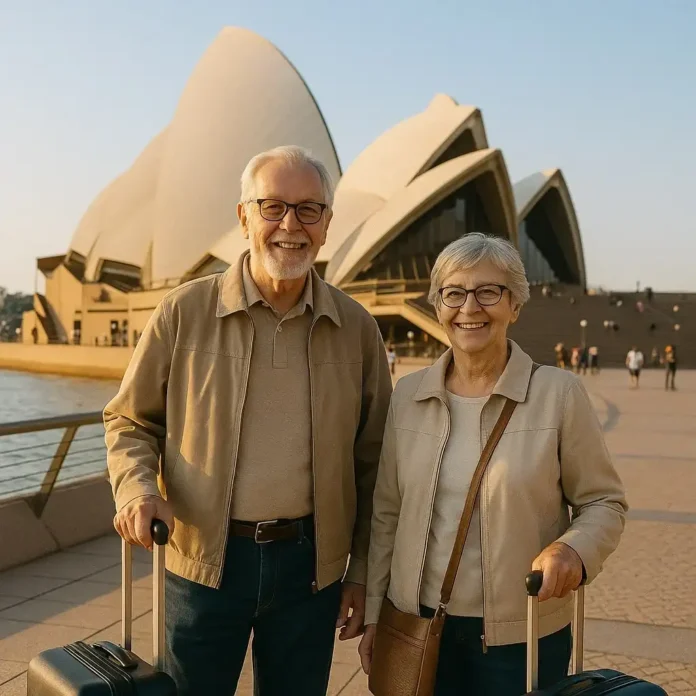The 189 Visa Australia (Skilled Independent visa subclass 189) is one of the most attractive pathways for skilled professionals seeking permanent migration. Most applicants already know the basics: the points system, occupation lists, and general eligibility.
But several details rarely appear in quick guides—and they can make or break your strategy. Understanding these lesser-known facts helps you plan timelines, avoid expired documents, and choose the right backup pathways like the Visa subclass 190 or the Skilled Work Regional Provisional visa subclass 491.
Below are five things about the 189 visa that most migrants don’t know, plus practical tips and FAQs at the end.
Fact 1: The Minimum Points Do Not Equal Real Chances
The legal minimum to submit an Expression of Interest (EOI) is 65 points. That number often creates false confidence. In reality, invitations are issued competitively: applicants are ranked by points first, then other tie-breakers. For many occupations, practical competitiveness sits significantly higher than the bare minimum—often in the mid-80s or above.
What this means for you
- 65 points = eligible, not competitive. You can submit an EOI, but in crowded occupations you may never receive an invitation.
- Occupation matters. Some roles hit “point inflation” because supply outweighs invitation places.
- Timing matters. Invitation volumes can fluctuate by program year and policy priorities, changing the “real” competitive score.
How to lift your points (without gambling on luck)
- English: Higher English categories can add meaningful points. If your score is close to the next band, consider a targeted retake.
- Partner skills: Depending on current rules, partner English/skills—or being single—can add points.
- Credentialed Community Language (CCL): Passing the NAATI CCL test is a popular, time-efficient boost.
- Australian study & Professional Year: If you studied in Australia or can complete a Professional Year (in fields where it’s available), these may help.
- Consider alternatives: If you’re stuck at a lower total, state nomination under the Visa subclass 190 or regional sponsorship via the Skilled Work Regional Provisional visa subclass 491 may outcompete waiting indefinitely on 189.
Fact 2: Expiry Dates Can Change the Game
Two clocks are always ticking: English test validity and skills assessment validity. If your EOI waits too long and either expires, you’ll need to renew—costing time and money. Meanwhile, your age band might change, potentially reducing points.
Common pitfalls
- Letting English lapse: You submitted your EOI when your English was valid, but by the time invitations roll around, it’s expired.
- Skills assessment mismatch: Different assessing authorities have different validity periods. Some are two years, others longer—always verify your authority’s rules.
- Age band rollovers: A birthday can change your age bracket and reduce points, affecting competitiveness.
Pro tips
- Plan backwards from validity: If your English or assessment expires in 12–18 months, set personal checkpoints to decide whether to re-sit early.
- Keep documents “evergreen”: If you’re within a few weeks of a higher English band, a quick retake might gain points and reset the validity clock.
- Track everything: Maintain a simple spreadsheet with dates: test taken, assessment issued, EOI submitted, and expiry targets.
Fact 3: Assessing Authorities Have Different Rules
Not all assessing authorities apply the same criteria. Some examine only qualifications and experience; others also require an English outcome before issuing a positive assessment. The result: two applicants in different occupations can face very different evidence checklists.
Examples of variation (high-level, not exhaustive)
- Work experience weighting: Some bodies count post-qualification experience only; others may accept certain pre-qualification experience.
- Task-specific proof: Portfolio evidence, project lists, reference letters, and statutory declarations may be interpreted differently.
- English requirements: A number of authorities won’t finalize a positive assessment without a qualifying English result.
- Action steps
- Read the authority’s current handbook: Requirements change; go to the official page for your occupation.
- Sequence smartly: If your authority needs English first, there’s no point lodging the assessment prematurely.
- Prepare for evidence gaps: Start collecting detailed employment references now—task-based duties, exact dates, and contact details—to avoid last-minute scrambles.
Fact 4: High Points Don’t Always Mean a Fast Invitation
Even with a competitive score, waiting is normal. Why? Invitations are capped per round and aligned with annual planning. In some occupations—think accounting or certain engineering fields—demand for places can far exceed supply.
What drives delay
- Occupation competition: Some job families are consistently oversubscribed.
- Program year settings: Invitation numbers and priorities can shift across the year.
- Tie-breakers: Among people with the same points, tie-break rules can nudge your EOI down the queue.
How to manage the wait
- Keep EOIs accurate: Update employment dates, higher English results, new qualifications, or partner status promptly.
- Run parallel strategies: Consider a Visa subclass 190 EOI to leverage state nomination; or the Skilled Work Regional Provisional visa subclass 491 to access regional sponsorship points.
- Stay realistic about timelines: Build contingency for document renewal and personal milestones (e.g., age changes, job transitions).
Fact 5: Alternative Pathways Can Be Safer (and Faster)
Many applicants fixate on the 189 because it’s independent—no sponsor, no state nomination. But the “pure freedom” of the 189 Visa Australia can come with longer waits. If your points are modest or your occupation is crowded, alternative pathways often improve your odds.
Visa subclass 190 (Skilled Nominated)
- Why it helps: State nomination adds points to your EOI, often making you competitive immediately.
- Trade-off: You’ll commit to living/working in the nominating state (in line with its guidelines).
- Upside: It’s a permanent visa, comparable end-state to the 189.
Skilled Work Regional Provisional visa subclass 491
- Why it helps: Regional sponsorship provides extra points and can unlock opportunities in regional areas.
- Trade-off: It’s provisional; you live, work, and/or study in designated regional areas for a period and then transition via a permanent pathway (subject to meeting evolving requirements).
- Upside: For many profiles, the 491 is the practical route to permanent residency when 189 invitations are scarce.
Bottom line: If your EOI score is stuck or your occupation is consistently oversubscribed, widening your strategy to the Visa subclass 190 or Skilled Work Regional Provisional visa subclass 491 often produces a faster, more certain outcome than waiting indefinitely.
A Hidden Truth: Competition Varies by Occupation
Not all occupations are treated equally in the invitation race. Professions in construction and many healthcare roles may receive invitations more readily due to ongoing national demand. Meanwhile, areas like accounting or civil engineering may face tougher competition. This is why two applicants with the same points can experience very different wait times.
How to use this insight
- Watch historical trends: While not predictive, past invitation patterns can guide your expectations.
- Tailor your boost: If your occupation is competitive, invest your effort where the points payoff is highest (e.g., English uplift, NAATI CCL).
- Consider state demand lists: Your occupation might be in strong demand in specific states—making the Visa subclass 190 a compelling plan A, not just a fallback.
Bonus Reality Check: An EOI Is Not a Visa Application
This catches many first-timers off guard: submitting an EOI does not give you a bridging visa or work rights. An EOI is an expression of interest only. You receive a bridging visa (if eligible) after you lodge a valid visa application onshore. If you’re offshore, the bridging visa concept doesn’t apply.
Takeaway: Plan your lawful stay separately from your EOI timeline. If your current visa expires before an invitation arrives, you’ll need a lawful pathway to remain in Australia (or consider offshore strategies).
Smart Planning Checklist
Use this quick list to keep your 189 strategy tight:
- Points reality check: Are you competitive for your occupation, not just eligible?
- Validity calendar: Track English and skills assessment expiry dates and age band changes.
- Authority rules: Confirm your assessing authority’s current evidence and English requirements.
- EOI hygiene: Keep all dates, evidence, and claims up to date; correct even small mistakes.
- Parallel pathways: Lodge EOIs for the Visa subclass 190 and Skilled Work Regional Provisional visa subclass 491 where sensible.
- Budget & buffer: Allocate time and funds for retakes or reassessments if the wait stretches.
- Professional advice: Have a registered migration agent sense-check your assumptions before key steps.
Example Scenarios (to make it concrete)
Amir, software developer, 80 points
Amir sits below typical competitive scores for his occupation. He retakes English, moves to a higher band, and adds NAATI CCL—lifting his points. At the same time, he lodges EOIs for both 189 and Visa subclass 190 to leverage state nomination. His improved profile and dual-track strategy shorten the overall wait.Meera, civil engineer, 85 points
Despite a strong score, Meera’s occupation is oversubscribed. She keeps her EOI updated but also pursues regional sponsorship under the Skilled Work Regional Provisional visa subclass 491. She secures a regional nomination faster than a 189 invitation and begins the regional pathway to PR.Daniel, accountant, 75 points
Daniel recognizes 189 is a long shot. He targets states where his role appears on the demand list and adapts his résumé to state criteria. A Visa subclass 190 nomination becomes his primary plan, with 189 as a “nice-to-have” if conditions improve.
Conclusion
The 189 Visa Australia is a premier pathway for skilled workers—but it isn’t always straightforward. Knowing the difference between eligibility and competitiveness, tracking document validity, understanding assessing authority nuances, and accepting that high points don’t always equal fast invitations can save you months and thousands of dollars.
Most importantly, don’t treat the 189 as the only viable route. The Visa subclass 190 and the Skilled Work Regional Provisional visa subclass 491 are not consolation prizes; for many applicants, they are the strategic path to permanent residency.
Before making final decisions, consider having your circumstances reviewed by a registered migration agent. Policies evolve, and personalized advice can sharpen your plan.
FAQs About the 189 Visa Australia
1) Can I get the 189 visa with just 65 points?
Legally, yes—you can submit an EOI with 65 points. In practice, many occupations need significantly higher scores to be competitive for an invitation.
2) What happens if my documents expire before I get an invitation?
You’ll likely need to retake your English test and/or renew your skills assessment, which adds time and cost. You might also lose points if your age bracket changes during the wait.
3) Do all assessing authorities have the same requirements?
No. Each authority sets its own criteria for evidence, experience, and sometimes English. Always check the current handbook for your specific occupation.
4) Does a high score guarantee an invitation?
No. High points improve your chances, but invitations depend on occupation demand, invitation caps, and tie-breakers. Some applicants with high scores still wait months or longer.
5) Is submitting an EOI the same as applying for a visa?
No. An EOI isn’t a visa application and doesn’t grant a bridging visa. Bridging visas (if eligible) only come after lodging a valid onshore visa application.
6) What if my points are too low for 189?
Consider alternatives. The Visa subclass 190 adds points through state nomination, and the Skilled Work Regional Provisional visa subclass 491 adds regional sponsorship points. Both pathways can ultimately lead to permanent residency if you meet the conditions.
7) Can I keep EOIs for multiple pathways at once?
Yes, many applicants run parallel EOIs—for example, 189 plus state nomination under the Visa subclass 190, and sometimes a regional EOI for the Skilled Work Regional Provisional visa subclass 491. Keep all information consistent and current.
8) How often should I update my EOI?
Update promptly whenever you gain points (e.g., higher English band, added experience, partner changes) or when information changes. Accurate, current EOIs are essential in competitive rounds.


